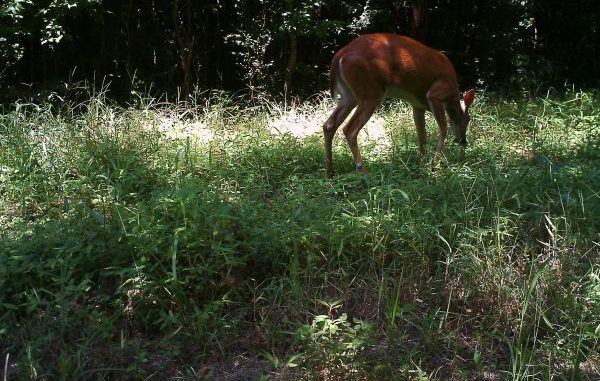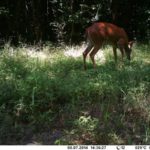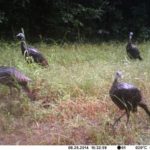
School is back in session and hunting season has finally arrived
In the dark ages many years ago, when I was a young lad, school always started the week after Labor Day; summer baseball began in June and ended at the end of July, but summer continued through August; and the alphabet letters on the phone were actually part of the phone number. Our number was FR7-5452 and I don’t think there was an area code; if we were at summer camp and needed to call home we simply would make a collect call (reverse the charges, please). Life seemed a little simpler, and involved much less technology.
Now, summer begins in June, but ends July 31; summer ball is played in April and May, which allows for a month or so of All-Star Ball (why don’t they call it spring ball?); school begins the first week of August, and don’t get me started with the phone technology!
The Moreland Clan has moved to our rural property in Clinton, but we do not have a house yet; we simply live in a room in our daughter’s house. Our three dogs have taken over Camp David, which has also become a storeroom for all my junk that was in Baton Rouge. Organized-disorganiztion, is the term I use for my situation. My stuff is also located in two other storage buildings. Why we have so much stuff who knows? Seems like we should just give it away and keep only what we actually use, but, this is the American dream, get all you can, can what you can, and store all the cans forever!
At some point we will build a new house and hopefully get back to a normal lifestyle, but with three grandkids that might be a while. Up at 6 a.m. to help get things ready for the day (our daughter heads off to teach around 6:30), assist as needed with the newest grandson, John Harrison; then make the school run in the mornings to have the 4-year-old and 6-year-old to school for 8 a.m., while my wife keeps John occupied; back to the house to help her as needed and if not needed then I get to go play on the property for a few hours (do I have to tell you how hot the last two weeks of August were?) At 3 p.m. the two guys at school have to be picked up and then home to help as needed with supper, homework, etc. If our daughter’s husband is on the nightshift then the schedule changes somewhat. I am not sure how these young families do it with all the running around. Maybe if we went back to the schedule we had in the Dark Ages with a three month summer it might be a little easier. I hope during the deer season the deer move between 9 a.m. and 2 p.m., or else I might have a slow season.
Deer season is here
If you are a bow hunter or someone who hunts with a crossbow, hopefully you have been doing the ground work needed to get ready for Oct. 1. I see more crossbow hunters down the road simply because of the urbanization that is taking place today. More than likely as the subdivisions increase on the rural landscape the ability to shoot firearms will be more restricted and the bow and crossbow will be the weapons of choice to help with the deer harvest. Even though my stuff is disorganized, it is organized enough that I can find what I need for my trips to the woods.
It has been a wet summer for us and the habitat conditions should have kept the plant quality good for body growth and antler development. Around our woods we have white oak acorns on the trees and there is a red oak acorn crop, so hunting the oak trees will be one way to have success. Last year the mast crop was a bust, but this year it appears to be fair. With the good soil moisture we had in August, I planted two new patches of peas in the middle of the month. I had planted two patches of sorghum, sunflowers and purple hull peas in June and they did exceptional; the deer got to browse on the peas all summer and the harvest of peas for family use was excellent.
These newest pea patches should provide hunting opportunity during October and into November. I will probably let the old patches remain during the fall and winter, perhaps clipping a strip or two down and put some seed on the ground for the birds. I also planted a patch of sorghum and Eagle brand soybeans; I mixed the sorghum too thick and it dominated the patch, but I did make some beans and the deer ate them.
I also spent the summer getting some dove plots ready, but since I have to submit this to the editor by Sept. 1, I cannot share with you any success stories. But there were doves on the ground eating seed at the end of August. While it is not legal to bait doves, one can legally plant wheat beginning Sept. 1. So with the season opening the first Saturday in September, it is legal to plow the field and plant with the appropriate rate of wheat. While broadcasting wheat is an approved seeding method, one has to use the appropriate rate, and the planting should not include any corn since corn is not planted in the fall and one does not broadcast corn!
In June I also planted my usual stands of American Jointvetch and these have done quite well. The trail cameras documented the fact that in July, when the vetch really started growing, the deer left the peas and started eating the vetch. Jointvetch is a legume, just like the peas and beans, and is a high quality forage. Jointvetch grows best during the hot days and will keep growing in the fall and stay available for the deer until the first frosts. It flowers and seeds out in September, so if you want to try and get seed for next year you should not clip it and plow it up to plant the winter crop. Let it flower-out and make seed and then once the seeds have dried up, clip it and then put in a winter crop or just let it stand during the winter days. If the winter is a mild one it may last longer than expected. These jointvetch strips will also provide us hunting opportunity in October.
Sometime this month, when the soil moisture is right, I will plow and plant the winter patches using a wheat/clover mix, along with chickory, turnip and mustard seed; this makes for an excellent wildlife buffet. It is generally best to use a mixture of forages rather than just using one type of seed.
2014 turkey hatch
There was some turkey production on our small property in East Feliciana Parish. One hen produced two poults and these were seen on a regular basis along with two more adult hens that did not produce any young, for whatever reason. If you documented turkey production on your property it would be good if you passed the information along to Jimmy Stafford, the LDWF Turkey Biologist. Jimmy puts together a report concerning the 2014 hatch and the more information he has, the better the reporting can be. Turkey hunting is all about having turkeys to hunt and if the production is good, the turkey hunting is generally good, but if the production is bad, you might want to consider taking up golf!




